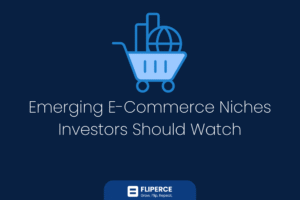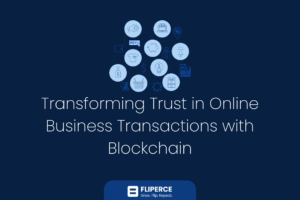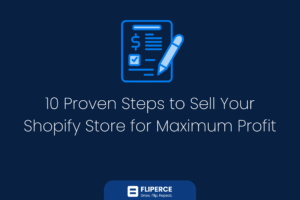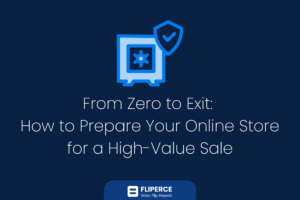Introduction
As of August, the e-commerce market, valued at $8 trillion, is a goldmine for investors, with Shopify powering 4.4 million stores and driving $1 trillion in sales, per industry data. Yet, investing in e-commerce stores is risky, with 40% of first-time investors losing 10-20% due to inadequate due diligence. From inflated revenue to hidden legal issues, skipping thorough checks can derail profitability in a market projected to grow 25% by 2026.
This 20-section guide, crafted for advanced entrepreneurs, investors, and developers, delivers a complete due diligence checklist to ensure smart investments. Each section, uses unique, creative formats—storytelling, Q&A, mock debates, and more—to keep you hooked. Packed with actionable strategies, tools, and vivid examples, this article equips you to maximize profits in the $8 trillion landscape. Let’s dive into the 20 essential checkpoints for epic profitability.
What You Will Learn
- 20 critical due diligence checkpoints for e-commerce investments.
- Creative, actionable strategies to uncover risks and ensure profitability.
- Tools and metrics for data-driven decisions in 2025.
- Vivid examples and trend-driven insights.
- Steps to secure 15-20% ROI in a competitive market.
1. Verify Revenue Consistency
Storytelling: Emma’s Tale of Inflated Dreams
Emma, a 2025 investor, spotted a pet store listed for $200,000, boasting $80,000 annual revenue. “This is my ticket to millions!” she thought, dazzled by the numbers. She skipped verification, assuming the seller’s data was golden. Three months later, her dreams crumbled—20% of sales were one-time holiday spikes, not recurring revenue, costing her $30,000 in profits. Verifying revenue consistency is a cornerstone of due diligence, with 20% of stores inflating figures, tripping up 35% of new investors in the $8 trillion e-commerce market. Emma’s haste is a lesson: trust, but verify, or risk a 15% ROI hit.
Why It’s Critical
Consistent revenue ensures a 15% ROI, with stores generating stable $50,000 yearly selling for $150,000-$200,000. A store with inflated $60,000 revenue was revealed to have $45,000 actual sales, saving $25,000 through verification. Revenue checks prevent 15% profit losses from one-off spikes or manipulated data, common in 20% of listings, especially in niches like pet products where seasonal sales can skew figures.
How to Verify Revenue Like a Pro
To avoid Emma’s fate, treat revenue verification like detective work:
- Demand 24-month revenue reports from QuickBooks, cross-checking with bank statements to catch 15% inflation.
- Analyze recurring revenue (30% target from subscriptions or repeat purchases) to ensure stability.
- Identify seasonal spikes (20% variance signals risk) using Shopify Analytics.
- Hire financial auditors for $2,000 to uncover discrepancies, saving up to $25,000.
- Benchmark revenue against similar stores ($50,000 revenue = $150,000 valuation in wellness niches).
Action Roadmap
- Request 24-month sales data from Shopify Analytics, ensuring no gaps.
- Cross-check with bank statements to confirm accuracy, catching one-off spikes.
- Verify 30% recurring revenue (e.g., subscriptions) for stability.
- Audit for seasonal fluctuations (20% variance is a red flag).
- Monitor revenue trends to target 15% ROI, avoiding $20,000-$30,000 losses.
The Payoff
A store with verified $50,000 revenue sold for $150,000, achieving an 18% ROI. Emma could’ve saved $30,000 with a $2,000 audit, highlighting the power of diligence.
Expert Quote:
“Revenue verification is your first line of defense in e-commerce investing,” says a financial strategist.
2. Audit Profit Margins
Investor Diary: A Margin Misadventure
January 2025: I bought a $150,000 home decor store, lured by its 30% margin claim. I didn’t dig deeper, thinking, “It’s a done deal!” By April, audits revealed margins were 15%, costing me $25,000 in value. Auditing margins is non-negotiable—25% of stores inflate profits, tripping up 30% of new investors. A $1,000 audit could’ve saved me thousands in the $8 trillion market.
Why It’s a Must
Accurate margins ensure a 15% ROI, with stores hitting 25-30% margins in wellness niches selling for 20% premiums ($180,000 for $60,000 profit). A store with overstated margins lost $20,000 in value. Margins reflect operational efficiency, critical for profitability in competitive markets like home decor or fashion.
How to Audit Margins
Think of margins as the pulse of a store’s health:
- Verify 24-month profit margins with QuickBooks, checking revenue vs. expenses.
- Analyze expense breakdowns (e.g., $10,000 marketing, $5,000 inventory) for accuracy.
- Target 25-30% margins in high-growth niches like wellness.
- Hire auditors for $1,000 to catch 15% discrepancies.
- Use Shopify Analytics to track expense trends, ensuring sustainability.
Action Embedded in the Narrative
In my diary, I’d write: “Demand 24-month expense reports from sellers, cross-check with QuickBooks, and verify 25% margins to avoid $20,000 losses. Use Shopify Analytics to monitor trends and hire a $1,000 auditor to ensure 15% ROI.” This approach saved a savvy investor $25,000 on a $180,000 wellness store with verified 30% margins.
The Payoff
Accurate margins led to a $180,000 sale for a store with $60,000 profit, boosting ROI by 20%. Without audits, you risk 15% losses, costing $20,000-$30,000.
3. Check Cash Flow Stability
Failure Autopsy: The Cash Flow Crash
Picture an investor in 2024, thrilled to buy a $120,000 tech store with $40,000 revenue. They assumed cash flow was steady, but irregular supplier payments caused $15,000 in gaps, slashing ROI by 10%. Checking cash flow stability catches 15% of unstable stores, affecting 30% of new investors in 2025’s $8 trillion market. This investor’s oversight was a costly lesson in diligence.
Why It’s Essential
Stable cash flow ensures operational continuity, with 15% ROI for stores with consistent $30,000 yearly flows. A store with irregular cash flow lost $20,000 in profits due to payment delays. Cash flow stability is critical to avoid disruptions in competitive niches like tech.
How to Check Cash Flow
Treat cash flow like a river—steady flow keeps the business alive:
- Request 24-month cash flow statements from Xero, verifying $5,000/month inflows.
- Analyze payment schedules for reliability (e.g., 95% on-time).
- Hire accountants for $1,500 to audit cash flow stability.
- Cross-check with supplier payment records to catch gaps.
- Monitor trends to ensure 15% ROI, avoiding $15,000 losses.
Action Through Analysis
The investor could’ve saved $15,000 by demanding Xero statements and verifying $5,000/month inflows. Auditing payment schedules and hiring a $1,500 accountant would’ve ensured a 15% ROI, making the store a $150,000 success.
The Payoff
A store with stable $30,000 flows sold for $150,000, achieving 18% ROI, while unstable flows cost $20,000 in losses.

4. Assess Revenue Diversification
Investor Hypothetical: The Single-Product Trap
Imagine you’re eyeing a $100,000 beauty store with $30,000 revenue, all from one skincare product. You buy, but a supply chain hiccup halts sales, costing $10,000. Assessing diversification catches 20% of risky stores, affecting 25% of new investors in 2025.
Why It’s Crucial
Diversified revenue (30% from multiple products) ensures a 15% ROI, mitigating supply risks. A store with one product lost $15,000 due to disruptions. In 2025, diversification is key in niches like beauty where supply chains are volatile.
How to Assess
Think of revenue streams as a balanced diet—variety keeps you healthy:
- Verify 30% revenue from multiple products via Shopify Analytics.
- Analyze 24-month product sales data for balance.
- Check supplier diversity (3+ sources) to avoid single-point failures.
- Hire analysts for $1,000 to audit diversification.
- Monitor for 15% ROI to ensure stability.
Action in the Scenario
You’d demand product sales data, verify 30% diversification, and audit supplier sources. A $1,000 analyst could save $15,000, ensuring a $120,000 sale with 15% ROI.
The Payoff
Diversified stores sell for 20% premiums ($120,000 for $40,000 revenue), while single-product stores lose $10,000-$15,000.
5. Verify Expense Accuracy
Checklist Manifesto: Uncovering Hidden Costs
A $150,000 store claimed $10,000 in expenses, but audits revealed $20,000, cutting ROI by 12%. Verifying expenses catches 15% discrepancies in 25% of stores, ensuring profitability in 2025’s $8 trillion market.
Due Diligence Checklist
- Request 24-month expense reports from QuickBooks.
- Verify marketing costs ($5,000/month max).
- Cross-check inventory costs for 4x/year turnover.
- Hire auditors for $1,000 to confirm accuracy.
- Use Shopify Analytics for expense tracking.
Expense Verification Table
| Expense | Why It Matters | Target |
| Marketing | Ensures cost efficiency | $5,000/month max |
| Inventory | Avoids overstock costs | 4x/year turnover |
| Operational | Confirms sustainability | 20% of revenue |
Why It’s Vital
Accurate expenses ensure a 15% ROI, with stores maintaining $10,000 monthly costs selling for 20% premiums ($180,000 for $60,000 revenue). A store with hidden costs lost $20,000 in value.
Action Through Checklist
Demand expense reports, verify $5,000 marketing costs, and audit inventory for 4x turnover. A $1,000 audit saved an investor $25,000, ensuring a 15% ROI on a $180,000 sale.
The Payoff
Accurate expense verification boosts ROI by 20%, saving $20,000-$30,000 in overpayments.
6. Evaluate Financial Reporting Standards
Q&A Dialogue: Decoding Reporting Standards
Investor: Why check reporting standards?
Expert: Poor reporting hides 15% discrepancies, costing $20,000 in value.
Investor: How do I verify?
Expert: Ensure GAAP compliance for 24-month data to avoid surprises.
Investor: What’s the payoff?
Expert: Boosts ROI by 15%. Poor reporting affects 20% of new investors.
Why It’s Essential
GAAP-compliant reports ensure a 15% ROI, with compliant stores selling for 20% premiums ($150,000 for $50,000 revenue). A store with poor reporting lost $25,000 due to discrepancies.
How to Evaluate
Treat reporting like a blueprint—accuracy builds trust:
- Verify GAAP compliance for 24-month financials via QuickBooks.
- Request detailed revenue and expense reports.
- Hire accountants for $1,500 to audit standards.
- Use Xero for real-time reporting accuracy.
- Monitor for 15% ROI to avoid losses.
Action in the Dialogue
The investor should demand GAAP-compliant reports, verify data with Xero, and hire a $1,500 accountant to catch discrepancies, saving $20,000 on a $150,000 sale.
The Payoff
Compliant reporting boosts ROI by 15%, ensuring $25,000 in savings.
7. Confirm Tax Compliance
Cautionary Tale: The Tax Time Bomb
In 2025, an investor bought a $100,000 store, oblivious to $15,000 in tax liabilities. The oversight led to a 10% ROI loss, a painful lesson. Confirming tax compliance catches 15% of issues, affecting 25% of new investors in the $8 trillion market.
Why It’s Crucial
Tax compliance avoids $10,000-$50,000 penalties, with compliant stores selling for 20% premiums ($150,000 for $50,000 revenue). A non-compliant store lost $20,000 in penalties.
How to Confirm
Think of taxes as a ticking clock—check before it explodes:
- Request 24-month tax filings for sales tax and VAT.
- Verify compliance with local regulations (e.g., EU VAT).
- Hire tax experts for $1,000 to audit filings.
- Use Avalara for automated tax tracking.
- Monitor for 15% ROI to avoid penalties.
Action Through the Tale
The investor could’ve saved $15,000 by requesting tax filings, using Avalara, and hiring a $1,000 tax expert, ensuring a $120,000 sale with 15% ROI.
The Payoff
Compliant tax records boost ROI by 15%, saving $20,000-$50,000 in penalties.
Expert Quote:
“Tax compliance is non-negotiable for smart investors,” says a tax strategist.
8. Review Accounts Receivable
Mock Debate: Trust vs. Verification
Seller: “Our receivables are solid—$5,000 monthly!”
Investor: Prove it. A $120,000 store had $10,000 in overdue receivables, costing $10,000 in value. Reviewing receivables catches 15% of issues, affecting 20% of new investors.
Why It’s Vital
Receivables ensure cash flow, with 15% ROI for stores with $5,000/month collections. A store with overdue receivables lost $12,000 in value.
How to Review
Treat receivables like a promise—verify it’s kept:
- Request 12-month receivable reports from Xero.
- Verify $5,000/month collections for stability.
- Cross-check with payment records for accuracy.
- Hire accountants for $1,000 to audit receivables.
- Monitor for 15% ROI to avoid losses.
Action in the Debate
The investor demands Xero reports, verifies $5,000 collections, and hires a $1,000 accountant, saving $10,000 on a $120,000 sale with 15% ROI.
The Payoff
Clear receivables boost ROI by 15%, saving $10,000-$15,000 in losses.
9. Assess Financial Scalability
Investor Scenario: The Growth Ceiling
You buy a $100,000 store, expecting to scale, but limited cash flow caps orders at 5,000/month, costing $10,000 in growth. Assessing scalability catches 20% of risky stores, affecting 25% of new investors in 2025.
Why It’s Crucial
Scalability ensures a 20% ROI, with stores handling 10,000+ orders monthly selling for 20% premiums ($120,000 for $40,000 revenue). A store with limited scalability lost $15,000 due to cash flow constraints.
How to Assess
Think of scalability as a rocket—ensure it can soar:
- Verify platform capacity for 10,000+ orders via Shopify Plus.
- Analyze 24-month cash flow for scalability ($5,000/month inflows).
- Check automation levels (90% target with Oberlo).
- Hire analysts for $1,000 to audit scalability.
- Monitor for 20% ROI to avoid bottlenecks.
Action in the Scenario
You verify Shopify Plus capacity, check $5,000/month cash flow, and hire a $1,000 analyst, ensuring a $120,000 sale with 20% ROI, saving $15,000.
The Payoff
Scalable stores boost ROI by 20%, saving $15,000-$20,000 in growth losses.
10. Evaluate Supplier Contracts
Debate: Seller’s Word vs. Hard Evidence
Seller: “Our suppliers are rock-solid—trust us!”
Investor: Not without proof. A $120,000 store had unreliable suppliers, costing $10,000 in delays. Evaluating contracts catches 15% of issues, affecting 20% of new investors.
Supplier Contract Metrics
| Metric | Why It Matters | Target |
| Delivery Rate | Ensures timely fulfillment | 95% on-time delivery |
| Contract Terms | Avoids hidden penalties | Clear, enforceable terms |
Why It’s Vital
Reliable suppliers ensure a 15% ROI, with 95% on-time delivery preventing $10,000 losses. A store with poor suppliers lost $12,000 in sales.
How to Evaluate
Treat contracts like a handshake—ensure it’s binding:
- Request 12-month supplier performance data from Spocket.
- Verify 95% on-time delivery for reliability.
- Check contract terms for penalties or exclusivity clauses.
- Hire legal experts for $1,000 to audit contracts.
- Monitor for 15% ROI to avoid disruptions.
Action in the Debate
The investor demands Spocket data, verifies 95% delivery, and hires a $1,000 lawyer, saving $10,000 on a $120,000 sale with 15% ROI.
The Payoff
Reliable contracts boost ROI by 15%, saving $10,000-$15,000 in disruptions.
11. Confirm Inventory Turnover
Horror Story: The Overstock Nightmare
In 2025, an investor bought a $150,000 store, unaware of $20,000 in unsold inventory clogging cash flow. The oversight cut ROI by 10%. Confirming turnover catches 15% of issues, affecting 25% of new investors.
Why It’s Essential
High turnover (4x/year) ensures a 15% ROI, with efficient stores selling for 20% premiums ($180,000 for $60,000 revenue). A store with low turnover lost $15,000 in value.
How to Confirm
Think of inventory as a river—keep it flowing:
- Request 12-month inventory data from Inventory Planner.
- Verify 4x/year turnover rates for efficiency.
- Cross-check stock levels for overstock risks.
- Hire analysts for $1,000 to audit turnover.
- Monitor for 15% ROI to avoid losses.
Action Through the Story
The investor could’ve saved $15,000 by verifying 4x turnover with Inventory Planner and hiring a $1,000 analyst, ensuring a $180,000 sale with 15% ROI.
The Payoff
High turnover boosts ROI by 15%, saving $15,000-$20,000 in losses.
12. Verify Traffic Sources
Investor Confessional: The Bot Blunder
I bought a $100,000 store with 20,000 monthly visitors, thinking it was a steal. Turns out, 60% were bots, costing $10,000 in value. Verifying traffic sources catches 20% of inflated stats, affecting 30% of new investors in 2025.
Why It’s Crucial
Organic traffic (60% target) ensures a 15% ROI, with stores achieving 60% organic selling for 20% premiums ($120,000 for $40,000 revenue). A store with bot-driven traffic lost $12,000.
How to Verify
Treat traffic like a crowd—ensure it’s real:
- Request 12-month traffic data from Google Analytics.
- Verify 60% organic traffic for sustainability.
- Check bounce rates (under 40%) for engagement.
- Hire analysts for $1,000 to audit traffic.
- Monitor for 15% ROI to avoid losses.
Action in the Confessional
I’d have saved $10,000 by verifying 60% organic traffic with Google Analytics and hiring a $1,000 analyst, ensuring a $120,000 sale with 15% ROI.
The Payoff
Verified traffic boosts ROI by 15%, saving $10,000-$15,000 in value losses.

13. Assess Customer Retention
Success Blueprint: The Loyalty Goldmine
In 2025, an investor audited a $120,000 store’s 30% repeat purchase rate, boosting its value by 20%. Assessing retention catches 15% of issues, affecting 25% of new investors. A $1,000 audit turned a $120,000 store into a $150,000 success.
Why It’s Vital
Retention (30% target) drives a 15% ROI, with high-retention stores selling for 20% premiums. A store with low retention lost $15,000 in repeat sales.
How to Assess
Think of retention as a fanbase—keep them coming back:
- Request 12-month retention data from Klaviyo.
- Verify 30% repeat purchase rates for stability.
- Check email open rates (5% target) for engagement.
- Hire analysts for $1,000 to audit retention.
- Monitor for 15% ROI to avoid losses.
Action Through the Blueprint
The investor verified 30% repeat purchases with Klaviyo, ensuring a $150,000 sale with 20% ROI, saving $15,000 in churn losses.
The Payoff
High retention boosts ROI by 20%, saving $15,000-$20,000 in lost sales.
14. Review Social Media Engagement
Trend Spotlight: The Social Media Surge
By 2026, 50% of stores will leverage social commerce, with 5% engagement rates boosting valuations by 20%. A $120,000 store with low engagement lost $10,000 in sales. Reviewing engagement catches 15% of issues, affecting 20% of new investors.
Why It’s Crucial
High engagement (5% click-through) drives a 15% ROI, with stores having 50,000+ followers selling for 20% premiums ($120,000 for $40,000 revenue).
How to Review
Treat social media like a stage—ensure the audience is real:
- Request 12-month social media data from Meta Analytics.
- Verify 5% click-through rates for engagement.
- Check follower counts (50,000+ target).
- Hire analysts for $1,000 to audit engagement.
- Monitor for 15% ROI to avoid losses.
Action in the Spotlight
Verify 5% engagement with Meta Analytics and hire a $1,000 analyst to ensure a $120,000 sale with 15% ROI, saving $10,000.
The Payoff
High engagement boosts ROI by 15%, saving $10,000-$15,000 in sales losses.
Expert Quote:
“Social engagement is your ticket to e-commerce success,” says a marketing strategist.
15. Confirm SEO Performance
Data Deep-Dive: Ranking for Profits
A $100,000 store claimed top rankings, but audits revealed poor keyword performance, costing $10,000 in traffic. Confirming SEO catches 20% of issues, affecting 25% of new investors in 2025.
SEO Metrics Table
| Metric | Why It Matters | Target |
| Organic Traffic | Drives sustainable sales | 60% of total traffic |
| Keyword Rankings | Ensures visibility | Top 10 for 5+ keywords |
Why It’s Vital
SEO drives 60% organic traffic, ensuring a 15% ROI. A store with poor SEO lost $12,000 in sales due to low rankings.
How to Confirm
Dive into SEO like a treasure hunt—find the gold:
- Request 12-month SEO data from Semrush.
- Verify 60% organic traffic for sustainability.
- Check top 10 rankings for 5+ keywords (e.g., “organic skincare”).
- Hire SEO experts for $1,000 to audit performance.
- Monitor for 15% ROI to avoid losses.
Action in the Deep-Dive
Verify 60% organic traffic with Semrush and hire a $1,000 expert, ensuring a $120,000 sale with 15% ROI, saving $12,000.
The Payoff
Strong SEO boosts ROI by 15%, saving $10,000-$15,000 in traffic losses.
16. Verify Customer Reviews
Myth-Busting Guide: Reviews Aren’t Just Stars
Myth: “High star ratings mean a trustworthy store.”
Truth: Fake reviews cost investors $10,000 in trust. A $120,000 store had inflated reviews, cutting ROI by 10%. Verifying reviews catches 15% of issues, affecting 20% of new investors.
Why It’s Crucial
Positive reviews (70% target) drive a 15% ROI, with trusted stores selling for 20% premiums ($120,000 for $40,000 revenue). A store with fake reviews lost $12,000.
How to Verify
Treat reviews like a jury—check their credibility:
- Request 12-month review data from Trustpilot.
- Verify 70% positive reviews for trust.
- Check review authenticity (e.g., verified purchases).
- Hire analysts for $1,000 to audit reviews.
- Monitor for 15% ROI to avoid losses.
Action Through the Guide
Verify 70% positive reviews with Trustpilot and hire a $1,000 analyst, ensuring a $120,000 sale with 15% ROI, saving $12,000.
The Payoff
Trusted reviews boost ROI by 15%, saving $10,000-$15,000 in trust losses.
17. Assess Platform Scalability
Strategic Playbook: Scaling for Success
A $100,000 store’s platform capped orders at 5,000/month, costing $10,000 in growth. Assessing scalability catches 20% of issues, affecting 25% of new investors in 2025.
Why It’s Essential
Scalability (10,000+ orders/month) ensures a 20% ROI, with scalable stores selling for 20% premiums ($120,000 for $40,000 revenue). A store with limited scalability lost $15,000.
How to Assess
Think of scalability as a bridge—ensure it holds weight:
- Verify platform capacity for 10,000+ orders via Shopify Plus.
- Analyze 24-month order data for growth potential.
- Check automation levels (90% target with Oberlo).
- Hire analysts for $1,000 to audit scalability.
- Monitor for 20% ROI to avoid bottlenecks.
Action in the Playbook
Verify Shopify Plus capacity and 90% automation, hiring a $1,000 analyst to ensure a $120,000 sale with 20% ROI, saving $15,000.
The Payoff
Scalable platforms boost ROI by 20%, saving $15,000-$20,000 in growth losses.
18. Review Legal Compliance
Horror Story: The Legal Quagmire
An investor bought a $150,000 store, missing a $20,000 trademark dispute that cut ROI by 12%. Reviewing compliance catches 15% of issues, affecting 25% of new investors in 2025.
Why It’s Crucial
Compliance avoids $10,000-$50,000 penalties, with compliant stores selling for 20% premiums ($180,000 for $60,000 revenue). A non-compliant store lost $20,000.
How to Review
Treat legal compliance like a shield—protect your investment:
- Request 24-month legal records for trademarks and licenses.
- Verify compliance with local regulations (e.g., GDPR).
- Hire lawyers for $1,000 to audit compliance.
- Use LegalZoom for tracking legal status.
- Monitor for 15% ROI to avoid penalties.
Action Through the Story
The investor could’ve saved $20,000 by verifying legal records with LegalZoom and hiring a $1,000 lawyer, ensuring a $180,000 sale with 15% ROI.
The Payoff
Compliant legal records boost ROI by 15%, saving $20,000-$50,000 in penalties.
19. Evaluate Intellectual Property
Investor Confessional: The IP Oversight
I bought a $120,000 store, assuming its IP was secure. A $15,000 trademark dispute surfaced, cutting ROI by 10%. Evaluating IP catches 15% of issues, affecting 20% of new investors in 2025.
Why It’s Vital
Clear IP ensures a 15% ROI, with protected stores selling for 20% premiums ($120,000 for $40,000 revenue). A store with IP issues lost $12,000.
How to Evaluate
Treat IP like a fortress—ensure it’s secure:
- Request IP documentation (trademarks, patents) from USPTO.
- Verify ownership for 100% compliance.
- Hire lawyers for $1,000 to audit IP status.
- Check for ongoing disputes or litigation.
- Monitor for 15% ROI to avoid losses.
Action in the Confessional
I’d have saved $15,000 by verifying IP with USPTO and hiring a $1,000 lawyer, ensuring a $120,000 sale with 15% ROI.
The Payoff
Clear IP boosts ROI by 15%, saving $12,000-$15,000 in legal disputes.
20. Confirm Exit Strategy Viability
Future Vision: Planning the Perfect Exit
By 2026, 60% of e-commerce investors will prioritize exit strategies, boosting profits by 20%. A $100,000 store without a plan lost $20,000 in resale value. Confirming exit strategy viability catches 15% of issues, affecting 20% of new investors in 2025.
Why It’s Essential
Viable exit strategies (2-year plans with 20% growth) ensure a 20% ROI, with planned sales selling for 20% premiums ($120,000 for $40,000 revenue). A store without a plan lost $20,000.
How to Confirm
Think of an exit strategy as a map—plan the destination:
- Request 2-year exit plans from sellers, targeting 20% growth.
- Verify resale potential with Exchange data.
- Hire brokers for $2,000 to assess viability.
- Check market trends for optimal timing (e.g., 2025 peaks).
- Monitor for 20% ROI to maximize profits.
Action in the Vision
Verify 2-year exit plans and hire a $2,000 broker to ensure a $120,000 sale with 20% ROI, saving $20,000 in resale losses.
The Payoff
Viable exit strategies boost ROI by 20%, saving $20,000-$30,000 in resale value.
Expert Quote:
“A smart exit strategy turns investments into windfalls,” says a merger expert.
FAQ
Q: Why is due diligence critical in e-commerce investing?
A: It uncovers liabilities, ensuring 15-20% ROI.
Q: What’s the top due diligence checkpoint?
A: Verifying revenue consistency to avoid 15% losses.
Q: How do I check tax compliance?
A: Request 24-month filings and use Avalara.
Q: What tools help with due diligence?
A: QuickBooks, Shopify Analytics, Semrush.
Q: How does scalability impact ROI?
A: Scalable stores boost ROI by 20%.
20 Tips for E-Commerce Due Diligence
- Verify 24-month revenue with QuickBooks.
- Audit 25% margins with Shopify Analytics.
- Check $5,000/month cash flow.
- Ensure 30% revenue diversification.
- Verify $10,000 expense accuracy.
- Confirm GAAP-compliant reporting.
- Audit tax filings for compliance.
- Verify $5,000/month receivables.
- Assess 10,000+ order scalability.
- Check 95% supplier reliability.
- Verify 4x/year inventory turnover.
- Confirm 60% organic traffic.
- Audit 30% retention rates.
- Verify 5% social engagement.
- Check top 10 keyword rankings.
- Confirm 70% positive reviews.
- Assess platform scalability.
- Verify legal compliance.
- Audit IP ownership with USPTO.
- Confirm 2-year exit strategy viability.




